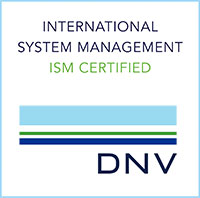


16th June 2015, Southampton – Class-leading offshore energy support vessel operator, Seacat Services, has unveiled its first vessel capable of carrying up to 24 industrial personnel. Seacat Courageous, a 26m high speed catamaran launched in February this year, will be the first of the Seacat Services fleet to benefit from the ability to carry more than 12 persons on board who are not engaged in the operation of the vessel.
Since the early beginnings of the offshore wind crew transfer industry, many operators of smaller high-speed craft have been bound to carrying 12 or fewer persons. However, this is widely regarded to fall short when it comes to the manning of modern high-speed crew transfer vessels for use in both the offshore wind and oil and gas industries.
While upholding stringent safety standards has always remained a priority for vessel operators, current regulations do not acknowledge that the typical passenger of an offshore energy service vessel is a highly-skilled technician accustomed to working in the marine environment and with appropriate safety training.
Furthermore, as offshore wind projects throughout Europe develop in size and complexity, the developers and operators of deep-water sites are increasingly demanding more versatile vessels with higher capacity for both equipment and personnel. In response, the German flag state has recently adopted a national guidance notice to allow vessels to operate with more than 12 industrial personnel onboard in national waters.
In order to assist the MCA and recognised classification organisations, Seacat Services have provided a detailed “Gap Analysis” report between the IMO 2000 HSC Code and the existing vessel notation.
It is with this information, coupled with the large amount of good work already being undertaken by the National Workboat Association and similar input from other vessel operators, designers and classification societies, that the MCA should be able to satisfy itself and its neighbouring flag states that this type of vessel is safe to carry an increased number of personnel.
In light of this, and to assist the European flag states, Seacat Services has announced that Seacat Courageous will be the first of its vessels to accommodate up to 24 offshore wind personnel. The 26-metre catamaran, on display at this year’s Seawork exhibition, has a modular interior, which allows the client to specify the number of suspension seats between 0 and 24, dependant on the particular operational requirements of their project.
This flexibility makes Seacat Courageous one of the most versatile vessels available to the European offshore wind industry, building on its already impressive sea keeping and load bearing capacity.
“A change in regulations for UK-flagged workboats is something the industry has been desiring for some time – and now that they have this legislation in place elsewhere, in many ways it makes a great deal of sense for the MCA to follow suit, in order to attract vessels to the UK register” said Ian Baylis, Managing Director, Seacat Services.
“While we’re unlikely to see a fundamental shift in the expectations of project owners and the way in which support vessels are operated in the coming years, modified legislation will remove a fairly arbitrary restriction on the capacity of vessels and allow a greater degree of flexibility – both for already operational boats such as Courageous and new builds entering the water.”
“In short, not every project is going to require 24-seater vessels, but for sure, UK- based operators need to be well placed to meet growing demand – particularly in the wider North Sea market, where regulation changes are already in effect and benefiting our overseas competitors”.

